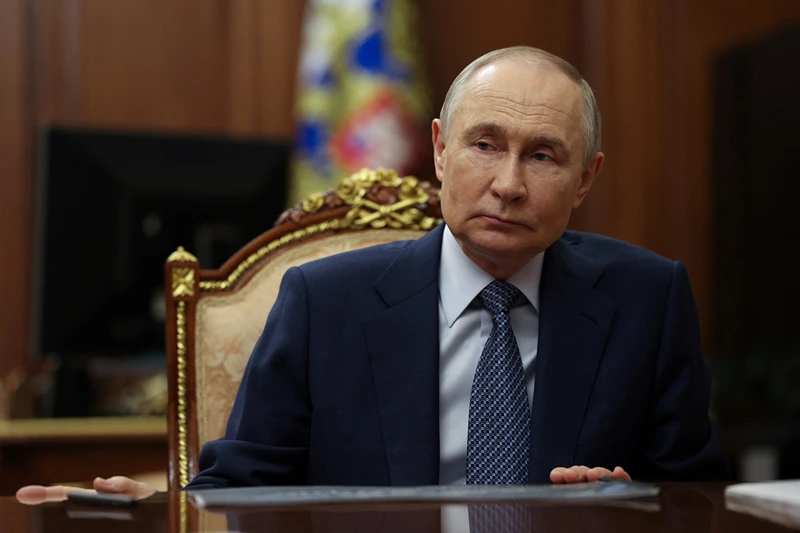
OAN Staff Blake Wolf
11:10 AM – Thursday, August 14, 2025
President Donald Trump announced on Thursday that Russian President Vladimir Putin appears eager to pursue a peace agreement, arguing that the prospect of sanctions was likely a decisive factor in Moscow’s decision to accept the meeting.
President Trump is set to meet with Putin in a high-stakes meeting in Alaska on Friday, marking the first in-person meeting between Putin and a sitting U.S. President since the Russia-Ukraine war broke out over three years ago.
“He’s — he really, I believe now — he’s convinced that he’s going to make a deal. He’s going to make a deal. I think he’s going to, and we’re going to find out,” Trump stated in a Thursday interview with Fox News.
Advertisement
Trump went on to explain that the imminent bilateral meeting with Putin “sets up the second meeting,” and “there is a 25% chance that this meeting will not be a successful meeting,” indicating that he hopes to set up a follow-up meeting with Putin and Ukrainian President Volodymyr Zelensky in case this one doesn’t result in success.
“Depending on what happens with my meeting, I’m going to be calling up President Zelensky, and let’s get him over to wherever we’re going to meet,” Trump continued.
Additionally, President Trump mentioned in the lead-up to the Alaska summit with Putin that a peace deal might involve “some swapping of territories to the betterment of both” Russia and Ukraine.
“The second meeting is going to be very, very important, because that’s going to be a meeting where they make a deal. And I don’t want to use the word ‘divvy things up,’ but you know, to a certain extent, it’s not a bad term, OK?” Trump added. “But there will be a give and take as to boundaries, lands, etc, etc. The second meeting is going to be very, very very important. This meeting sets up like a chess game.”
Meanwhile, Putin has since praised President Trump for engaging in “sincere efforts” to end the Russia-Ukraine war while suggesting that a potential peace agreement might include a nuclear arms deal.
“The current American administration… is making, in my opinion, quite energetic and sincere efforts to stop the hostilities, stop the crisis, and reach agreements that are of interest to all parties involved in this conflict,” Putin stated.
Putin claimed that he hopes his meeting with President Trump will “create long-term conditions for peace between our countries, as well as in Europe, and in the world as a whole.”
The Russian president continued, expressing that if the talks are successful, he would welcome a “next stage” of discussion with the United States with the intention of “reaching agreements in the area of control over strategic offensive weapons.”
Putin’s comments are seemingly in reference to the New START treaty (Treaty on Measures for the Further Reduction and Limitation of Strategic Offensive Arms) of 2011, a nuclear arms reduction treaty between the United States and Russia, which is set to expire in February 2026.
New START Treaty
Signed: April 8, 2010, in Prague by Presidents Barack Obama and Dmitry Medvedev.
Entered into force: February 5, 2011
Extended: The treaty was extended in 2021 by mutual agreement, allowing it to remain in force until February 5, 2026
Purpose: It limits each side to 1,550 deployed strategic warheads, 700 missiles and bombers, and 800 total launchers (deployed and non-deployed), including rigorous verification procedures like data exchanges and onsite inspections
Expiration Date: The treaty is indeed set to expire in February 2026
Stay informed! Receive breaking news alerts directly to your inbox for free. Subscribe here. https://www.oann.com/alerts
What do YOU think? Click here to jump to the comments!
Sponsored Content Below
















